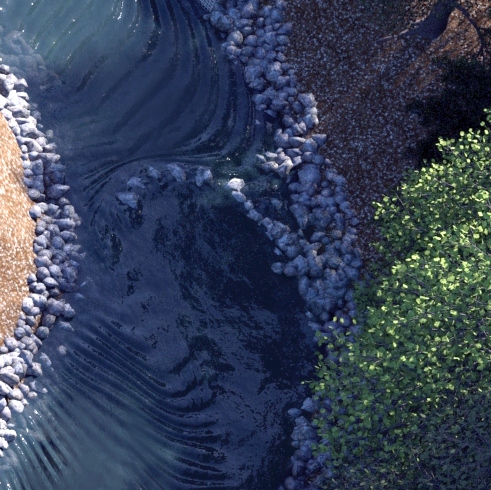LOG, ROCK AND J-ROCK VANES
Adapted from fact sheet at the Stormwater Managers Resource Center website
www.stormwatercenter.net

Description
Vanes are linear structures that extend out from the streambank into the stream channel in an upstream direction. They essentially mimic the effect of a tree partially falling into the stream. They are usually placed along the streambank where erosion is occurring along the toe of the slope. The purpose of vanes is to reduce erosion along the streambank by redirecting the stream flow toward the center of the stream. In addition, they tend to create scour pools on the downstream side.
Design Considerations
Vanes can be made of rock or log. They grade down from the bankfull elevation at the streambank to the channel invert at their terminus in the stream. Vanes generally extend out from the stream bank 1/3 of the bankfull width and are angled upstream from the bank at a 20 to 30 degree angle. They should be carefully located and installed so as not to produce additional erosion on the upstream side where they meet the bank (eddy scour) or allow flows to outflank them, exacerbating existing bank erosion problems. The only difference between the log vane and the rock vane is the material used. The J - vane is basically the same as a rock vane with the exception that it curls around at the end in the shape of a "J." The curved end portion serves to enhance downstream scour pool formation.
The rock vane is constructed by first excavating a trench for the footer stones. The footer stones are then placed in the trench so that there is a gap between them equal to 1/3 of the stone diameter. This gap will allow the vane stones to interlock with the footer stones. The vane stones should be placed on top of the footer stones so they are staggered over two adjacent footer stones and skewed slightly upstream of the footer stones. As the vane is built out and slopes down from the bank, footer stones will become unnecessary when the vane stones can be placed in the trench and extend up to achieve the desired elevation.
Effectiveness
Rock, log and J-vanes have significant habitat enhancement potential through the creation of downstream scour pools, narrowing and deepening of the baseflow channel, and the enhancement of riffle habitat along the upstream side.